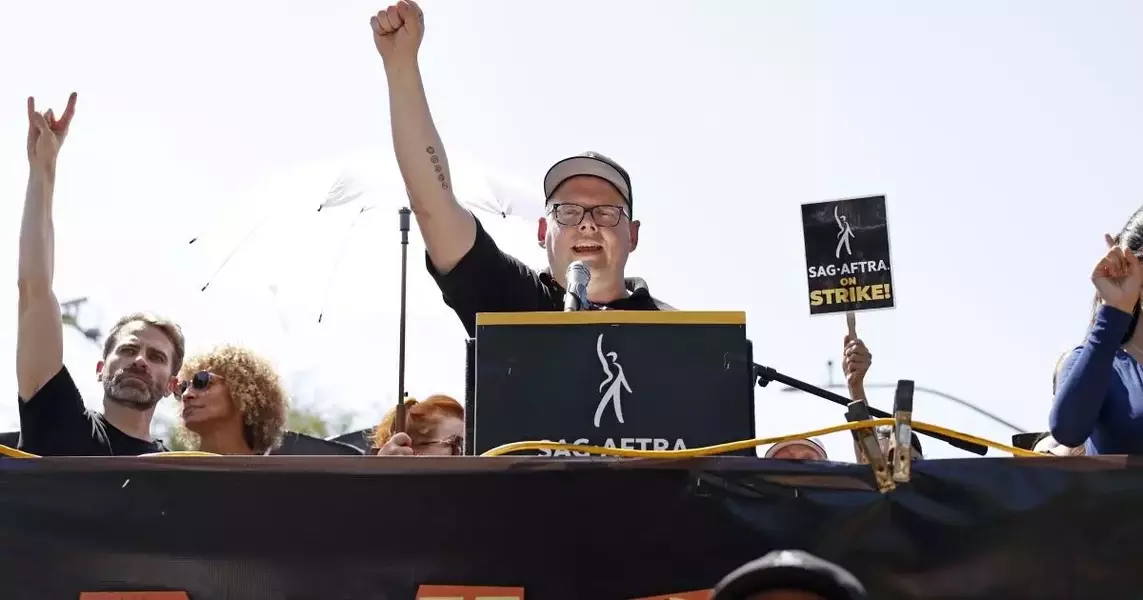Video game performers move closer to strike as SAG-AFTRA negotiations stall over AI

The Battle for Performers' Rights in the Video Game Industry
The video game industry is facing a potential showdown as performers' union SAG-AFTRA and top game companies struggle to reach a new contract agreement. At the heart of the dispute are issues surrounding the use of artificial intelligence (AI) and the rights of voice and motion-capture artists. With the previous contract expiring in November 2022, the stakes are high as both sides fight to protect the interests of the industry's most valuable assets – the performers whose work brings these virtual worlds to life.Performers Demand Stronger Protections Amid AI Advancements
Protecting Performers' Voices and Likenesses
The video game industry has long relied on the talents of voice and motion-capture artists to bring its characters to life. However, the rise of AI technology has raised concerns among performers about the potential for their work to be replicated without their consent. Game performers are seeking a contract that would require producers to obtain their permission before using AI to reproduce their voices or likenesses. They argue that they are particularly vulnerable to AI encroachment, as many specialize in voice-over work.The performers are also demanding fair compensation when their performances are replicated using AI. They contend that their unique skills and contributions should be recognized and rewarded, even when their work is digitally recreated. This issue has become a major sticking point in the negotiations, as game companies seek to leverage AI to reduce costs and increase efficiency.
Pushing for Improved Working Conditions
In addition to the AI-related demands, the video game performers are also seeking other improvements to their working conditions. They are calling for wage increases to keep pace with inflation, as well as more rest time and the provision of set medics for stunts and hazardous jobs. These requests reflect the physical and mental demands of their work, which can involve long hours, intense physical performances, and high-stress environments.The performers' union, SAG-AFTRA, has made it clear that they are prepared to take strong action to secure a favorable contract. The union's national board has granted its executive director and chief negotiator the authority to call a strike if a settlement cannot be reached with the game companies. This move underscores the union's determination to protect the rights and well-being of its members, who are the backbone of the video game industry.
Lessons from the TV and Movie Industry
The current negotiations in the video game industry echo the recent labor dispute in the TV and movie industry, where actors and writers staged a strike that lasted 118 days. AI was a major point of contention in that dispute, with performers seeking to ensure that their work was not exploited or replicated without their consent.The video game performers are likely drawing inspiration from the success of their counterparts in the TV and movie industry, who were able to secure important concessions on the use of AI. This experience has emboldened the video game performers to take a firm stance and demand similar protections for their work, which is increasingly integral to the success of the gaming industry.
The Potential for a Strike
With the previous contract expired and the negotiations at an impasse, the video game performers are poised to take drastic action. The union's decision to grant its executive director the authority to call a strike underscores the seriousness of the situation and the performers' willingness to disrupt the industry if their demands are not met.A strike by video game performers would have significant consequences for the industry, as many of the most popular and successful titles rely heavily on the contributions of these artists. The companies would be forced to either accede to the performers' demands or find alternative ways to produce their games, which could result in delays, reduced quality, and a potential backlash from fans.
As the negotiations continue, the video game industry finds itself at a crossroads. The performers are determined to secure stronger protections and better working conditions, while the companies seek to maintain their competitive edge and control costs. The outcome of this dispute will have far-reaching implications for the industry, shaping the future of how video game characters are brought to life and the rights of the artists who make it possible.